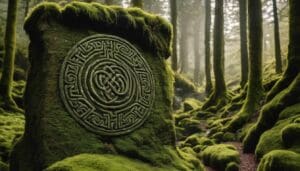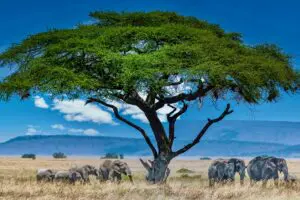Lough Neagh’s Mystical Origins, the Largest Lake in the UK
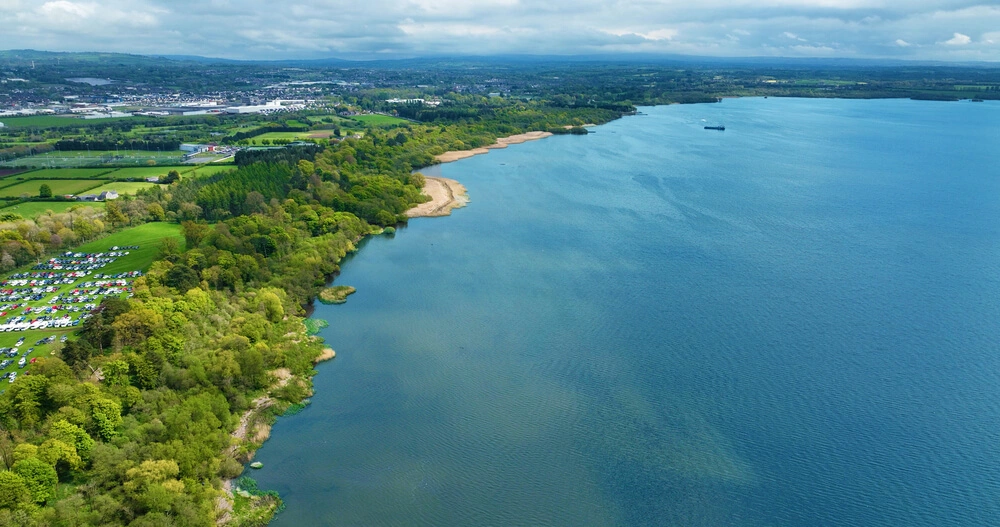
Updated On: April 20, 2024 by Yasmin Elwan
Nestled in the heart of Northern Ireland, Lough Neagh holds a special place in both the geography and the mythology of the region. As the largest lake in the UK, it spans an impressive 392 square kilometres, providing a vital hub for wildlife, economic activity, and leisure. Its sheer size and the mystery that shrouds its origins have made Lough Neagh a source of intrigue and legend for centuries. Our exploration into this storied lake will unearth the age-old tales and examine the truths they hold.
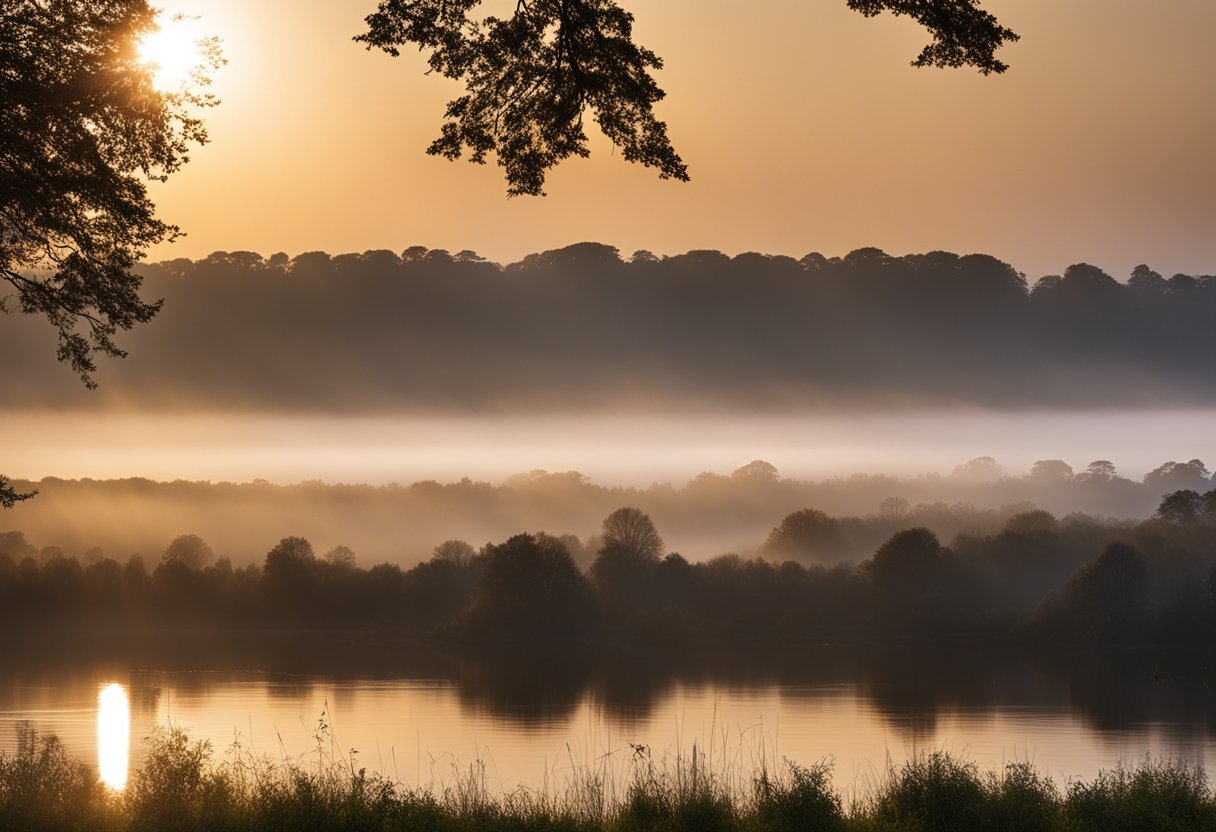
The mythical origins of Lough Neagh have been woven into the fabric of Irish culture, leaving an indelible mark on the collective imagination. One of the most enchanting legends tells of the Irish giant Finn McCool, who, in a fit of rage during a confrontation with a Scottish rival, is said to have carved out a chunk of earth to hurl at his enemy.
The resulting crater filled with water, giving birth to what is now known as Lough Neagh. Beyond its legendary tales, Lough Neagh also has a profound cultural and historical significance, influencing the communities that fringe its shores and contributing greatly to the biodiversity and environmental importance of Ireland.
The Formation and Geography of Lough Neagh
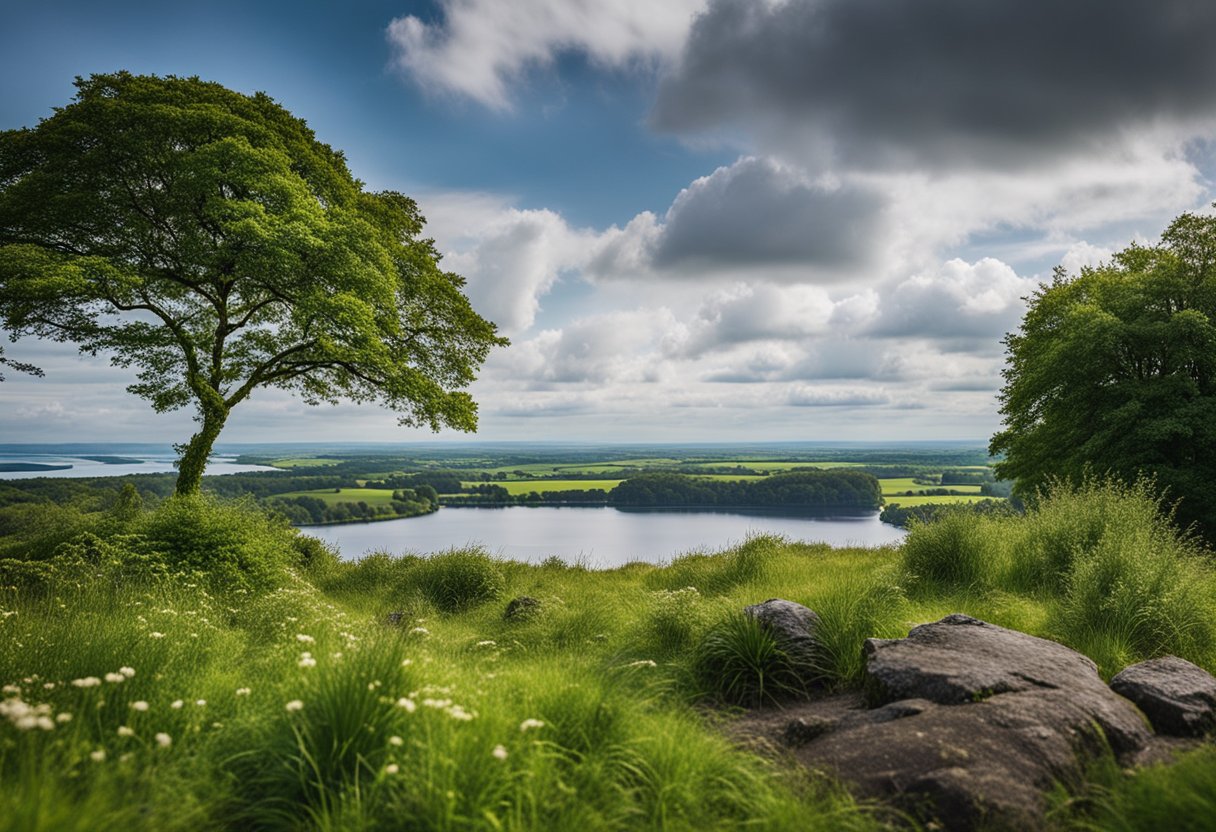
We’re delving into the fascinating formation and extensive geography of Lough Neagh, not only the largest lake in the British Isles but also a water body replete with geological and historical significance.
Geological Evolution
Lough Neagh boasts a rich geological history shaped over thousands of years. It’s believed that the lough’s formation is the result of a gradual process involving tectonic shifts and glaciation, which sculpted its current basin. Throughout these transformations, the lake has become a quintessential part of Northern Ireland’s geography, capturing both the imagination and interest of scientists and historians alike.
Comparing Size and Depth
When examining Lough Neagh’s dimensions, one is struck by its sheer vastness. With a surface area of about 151 square miles (392 square kilometres), it holds the title of the largest lake on the island of Ireland and in the entire United Kingdom. Despite its impressive surface area, the lake’s depth is relatively shallow, with an average depth of only 9 metres (30 feet), lending a unique character to its aquatic environment.
Lough Neagh’s considerable size is complemented by the presence of several islands, which contribute to its biological diversity and are an integral part of the lough’s ecosystem. Collectively, these geographical features distinguish Lough Neagh not only as a main water feature of Ireland but also as a notable one in Europe.
Mythology and Legends of the Largest Lake in the UK
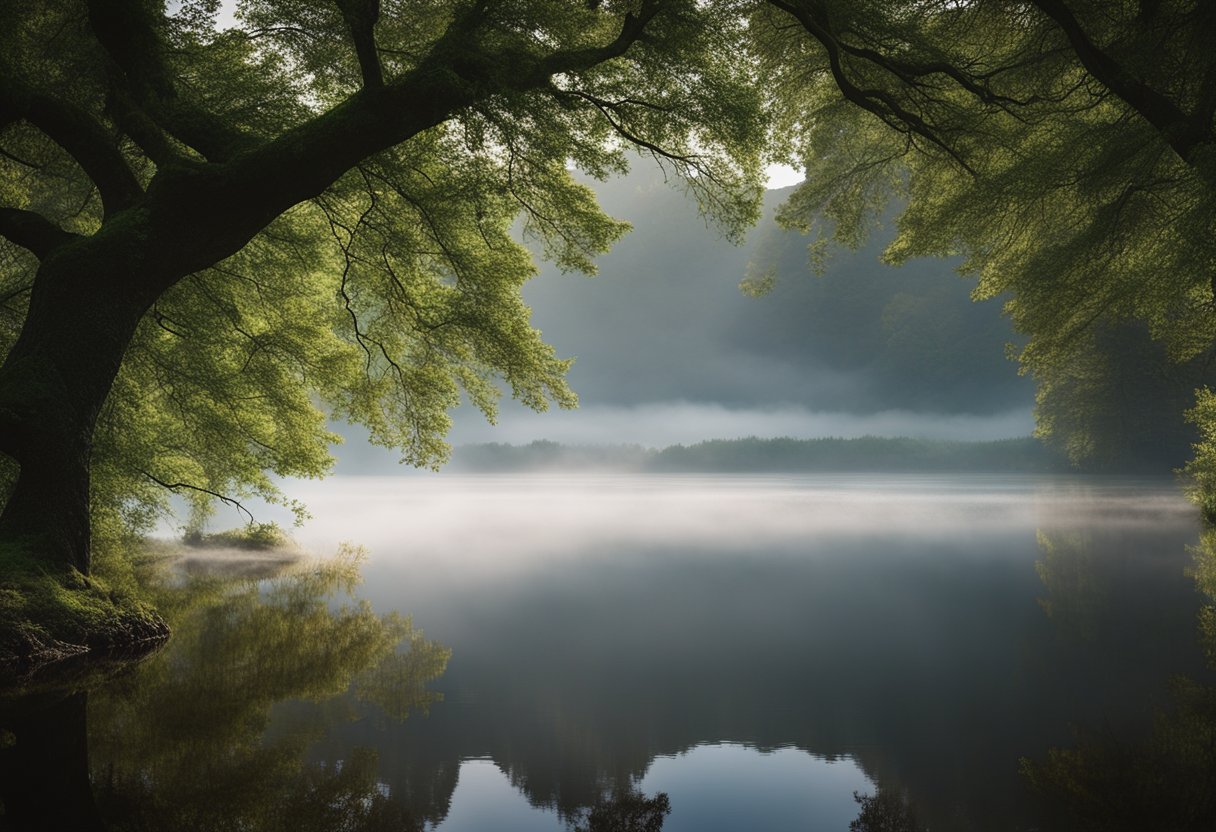
Lough Neagh, the largest lake in the British Isles, is steeped in mythology and legends that have been passed down through the ages. With origins shrouded in the mists of time, these tales continue to capture the imagination of all who hear them.
Finn McCool and the Giants
One of the most celebrated legends associated with Lough Neagh tells of the mighty Finn McCool, an iconic figure in Irish mythology. It is said that, during a confrontation with a Scottish giant, Finn tore a piece of land from Ulster and hurled it at his rival. His aim was not true, and the earth fell into the sea, forming what we now know as the Isle of Man. The resulting crater filled with water over time, thereby creating the grand expanse of Lough Neagh.
- Myth: Finn McCool creates the Isle of Man.
- Origin: A thrown piece of earth from Ulster.
- Legends: A giant’s altercation leads to the creation of the lake.
Eochaid, Liban, and the Sunken City
Another compelling tale is woven around Eochaid, the father of Liban, and a city claimed by the waters. Legend holds that a great flood engulfed the dwelling of Eochaid and transformed his daughter into a mermaid. This myth tells of a spring bursting forth beneath their home, giving birth to the lake and submerging an entire city beneath its waves. Giraldus Cambrensis himself recounted the story of the sunken city, which has lingered in the annals of Irish lore for centuries.
- Myth: The transformation of Liban into a mermaid.
- Origin: The catastrophic flood from a spring.
- Legends: A city lost under Lough Neagh.
Cultural and Historical Significance
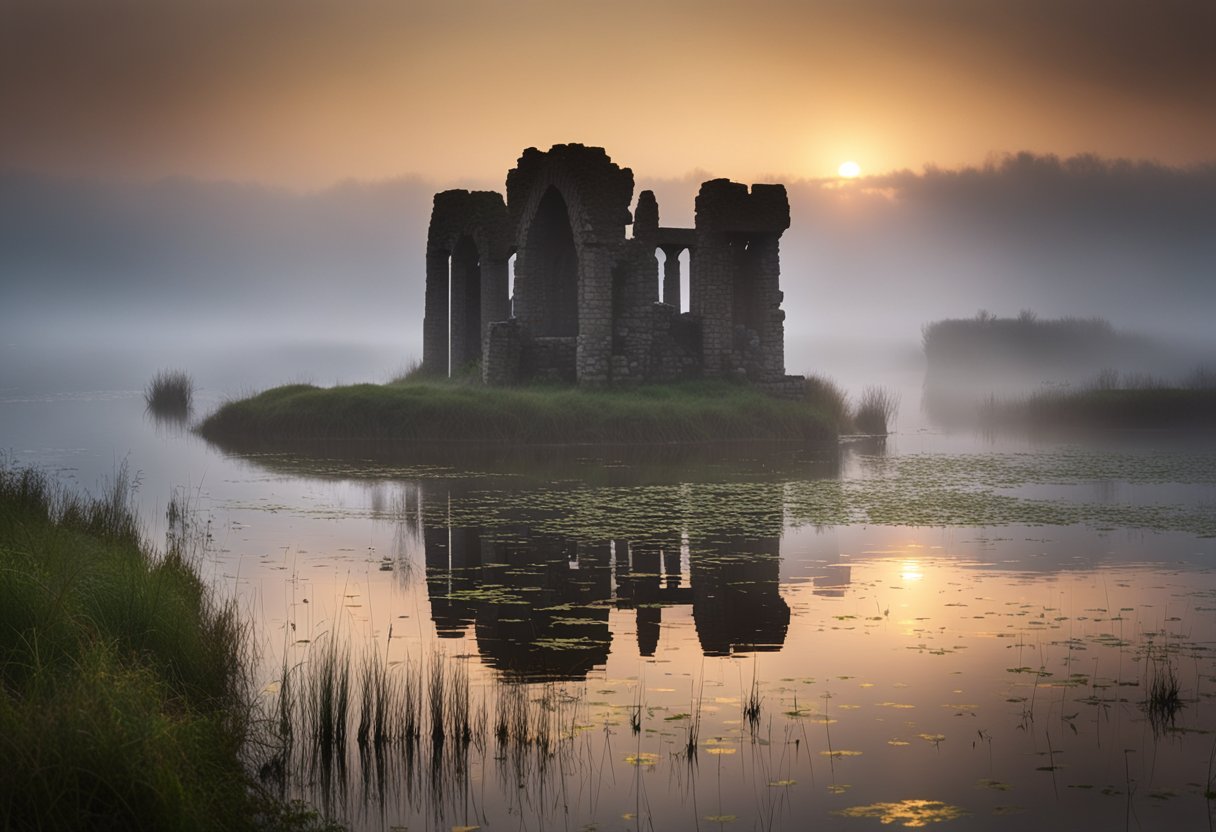
Lough Neagh holds a special place in Irish culture, deeply rooted in the memories and traditions of the land. Its legendary origins echo through literature and historical sites, making it much more than just a body of water.
Literary References
The lake has inspired many poets and writers, with Thomas Moore being one of the most notable. His poem “Where Lough Neagh’s Gentle Shore” encapsulates the serenity and the evocative beauty of the area. Meanwhile, Seamus Heaney, a Nobel laureate and one of Ireland’s most distinguished poets, has also referenced Lough Neagh, weaving it into the fabric of his work to explore themes of memory and identity.
Historic Sites and Artefacts
The lough is dotted with ancient sites and artefacts, each with a tale to tell. Giraldus Cambrensis, a medieval chronicler, mentioned Lough Neagh in his writings, offering insight into its historical significance during the 12th century. Furthermore, the surrounding area is a testament to its historical richness, with remnants that bear witness to the lough’s importance in various aspects of life, including music and everyday activities of past societies.
Ecology and Environment
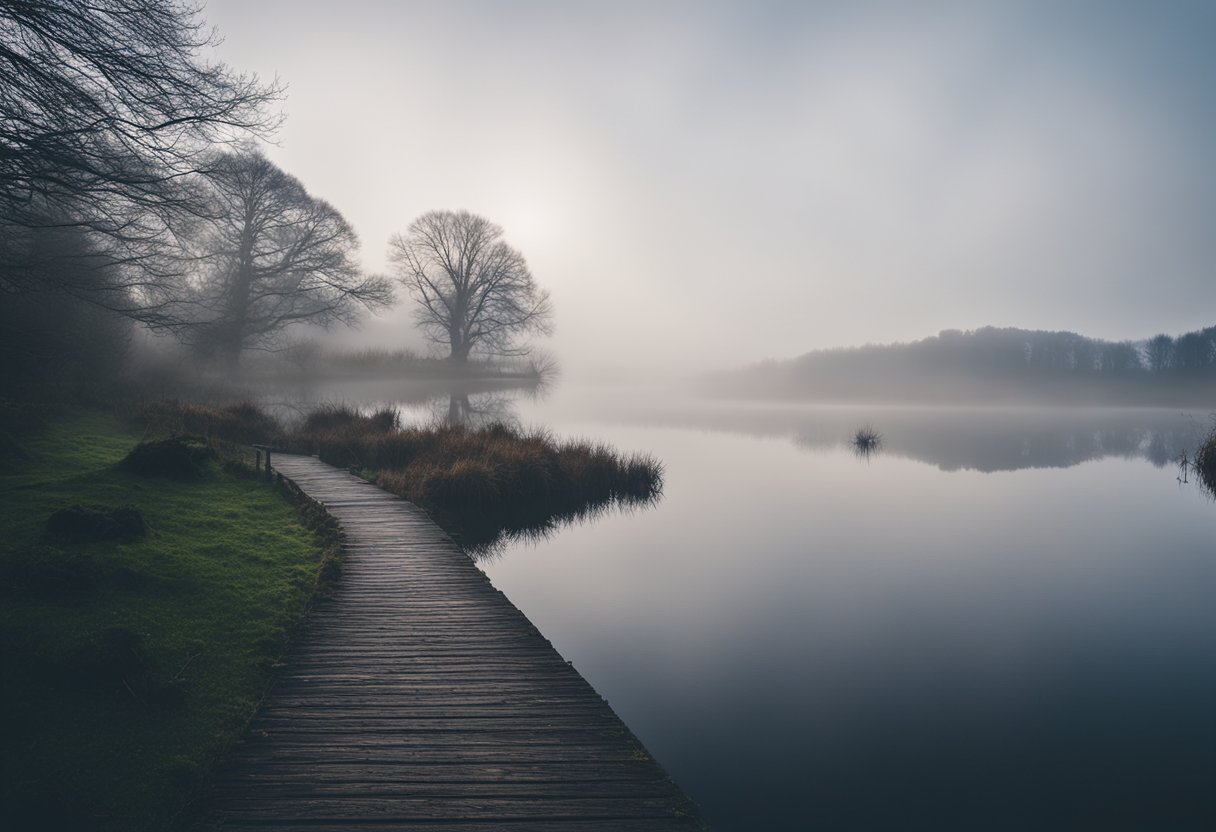
In exploring the rich tapestry of Lough Neagh’s ecology, we uncover an intricate ecosystem and diverse habitats that support a broad range of wildlife.
Aquatic Life
Lough Neagh is an epicentre for aquatic biodiversity, boasting a complex network of life beneath its surface. This lake is especially renowned for its eel population, sustaining the largest wild eel fishery in Europe. The waters are also home to several fish species, including the pollan, which is unique to Lough Neagh, and pike, prized by anglers for their sport. Efforts are made to monitor water quality, which is crucial for maintaining the diversity and vitality of aquatic life.
Surrounding Flora and Fauna
Lying around the Lough, a variety of flora flourishes, some of which are rare species contributing to the unique character of the region. The area supports an abundance of fauna, such as the graceful terns that swoop over the lake and the elusive otter, a sentinel of a thriving habitat. This environment, however, faces challenges, with algae blooms indicating stresses within the ecosystem. Continuous monitoring is pivotal for the health of the lake’s surroundings, ensuring the protection of the delicate balance of Lough Neagh’s flora and fauna.
Economic Activities and Uses
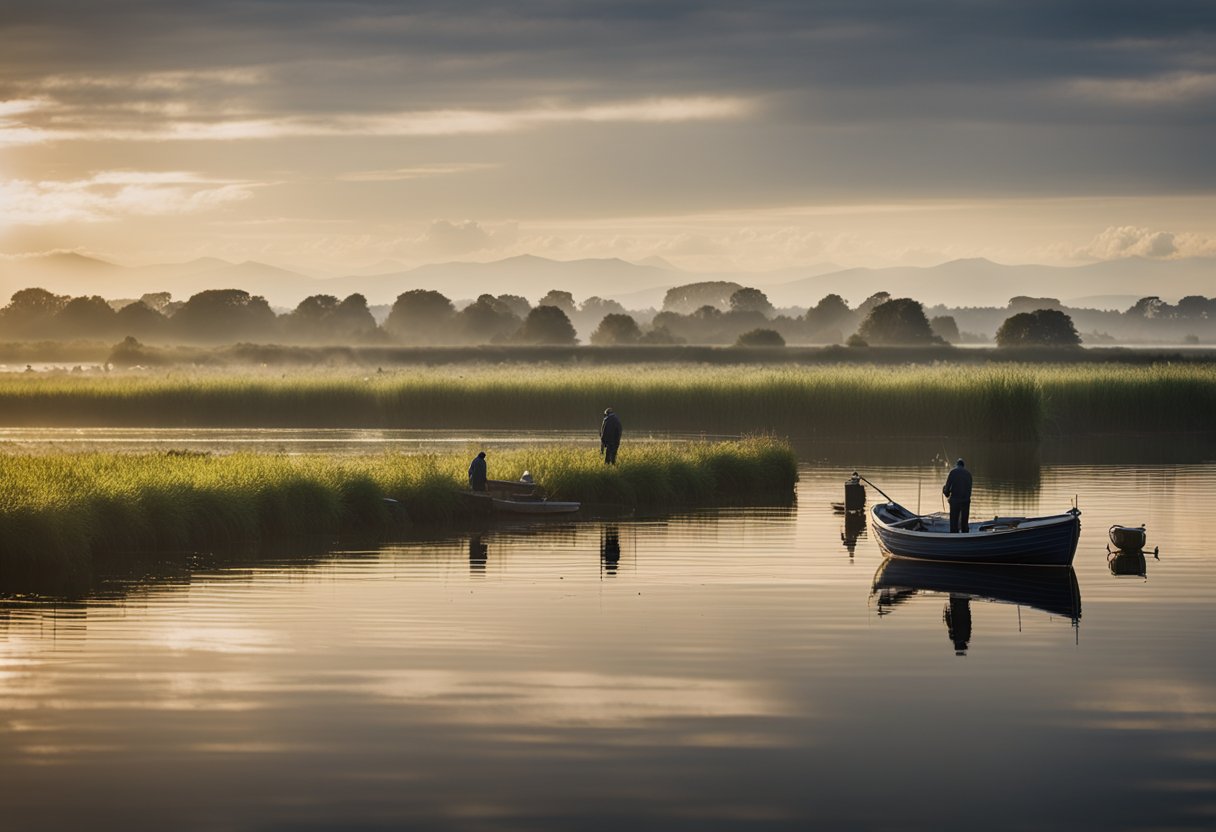
Lough Neagh holds significant importance for the local economy due to its thriving fishing industry and the agricultural value of the surrounding land. It plays a crucial role in both trade and the environment, balancing commercial activities with ecological preservation.
Fishing Industry
Eel Fisheries are a notable economic pillar around Lough Neagh. With a tradition dating back centuries, the eel fishery here is renowned, contributing substantially to local and regional trade. The eels from Lough Neagh are highly sought after, both within the UK and across Europe, attributing to the lake’s longstanding reputation in the fishing community.
- Catch: European eels (Anguilla anguilla)
- Importance: Cultural heritage, Export revenue
- Management: Sustainable practices to combat overfishing and ensure the eels’ future
Agriculture and Land Use
The areas surrounding Lough Neagh are primarily used for Agriculture, which has been a cornerstone of the local economy since ancient times. The fertile land supports various crops and livestock, with an emphasis on sustainable methods to minimise Pollution and protect the Environment.
- Crops: Potatoes, barley, and other vegetables
- Livestock: Cattle and sheep farming
- Environmental Concerns: Efforts to reduce agricultural run-off into the lake
We must consider the delicate balance between these economic uses and the need to protect Lough Neagh’s natural resources for future generations.
Recreational Use and Tourism
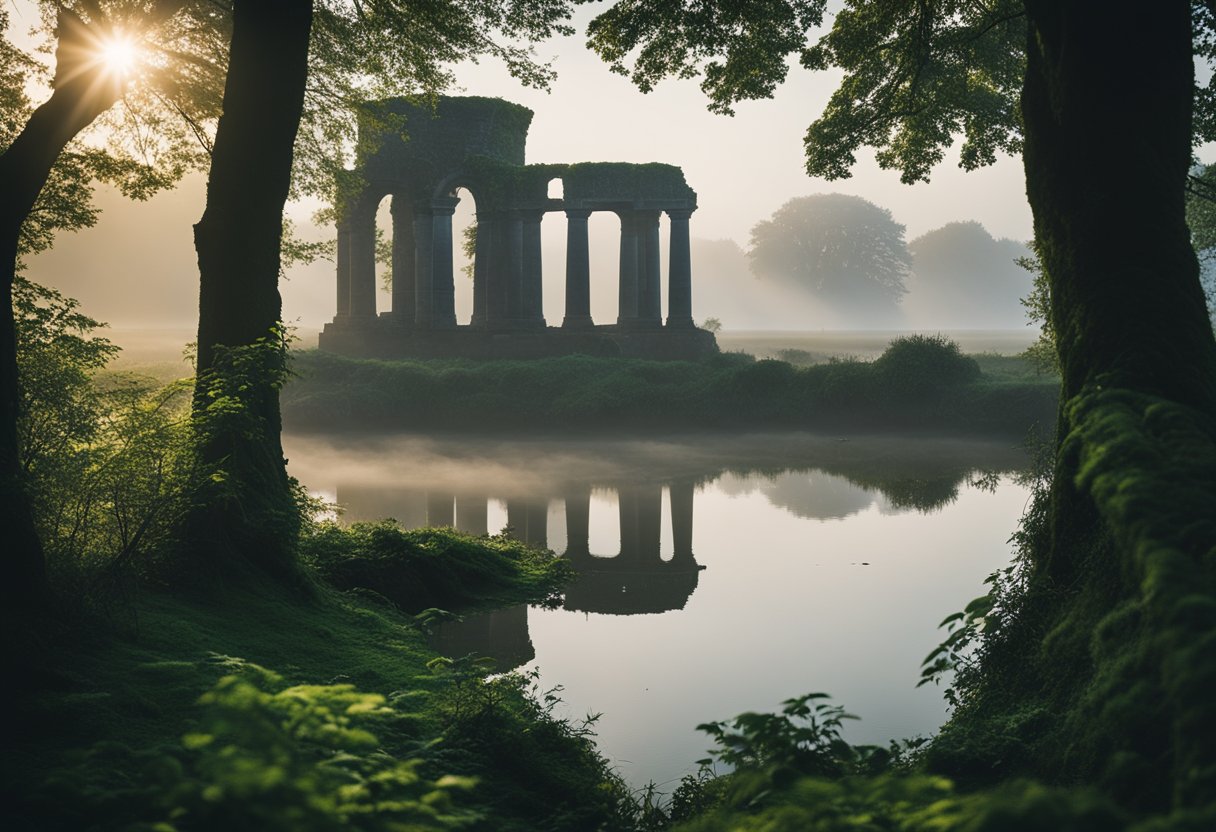
Lough Neagh’s extensive offerings for recreational activities and tourism opportunities make it an exceptional destination. We find its waters and surrounding greenery an ideal setting for various leisure pursuits, creating a vibrant hub for both locals and travellers alike.
Water Sports and Activities
We often see the calm and expansive waters of Lough Neagh as a haven for enthusiasts of water sports. Boating, particularly, is a favoured activity with visitors frequently taking to the lake to enjoy the tranquillity it offers. Swimming is also a popular pastime during the warmer months, as the gentle shores of the lough provide safe and pleasant conditions.
In addition to personal leisure, the lough hosts a range of festivals throughout the year. These waterfront celebrations harness the lough’s scenic backdrop, offering a variety of water-based competitions and demonstrations that appeal to a broad audience.
Nature Observation and Birdwatching
Lough Neagh’s diverse ecosystems attract numerous birdwatchers, who come to observe the rich birdlife that frequents the area. The lough’s habitats support a wide array of bird species, ensuring that those with binoculars in hand are seldom disappointed. From the common coot to the more elusive whooper swan, the avian diversity here is remarkable.
The embrace of the natural surroundings extends beyond birdwatching—it’s a place where the serenity of nature can be appreciated in its fullest form. Nature trails meander through the nearby woodlands and wetlands, inviting those who wish to immerse themselves in the lough’s tranquil environment.
Conservation Efforts
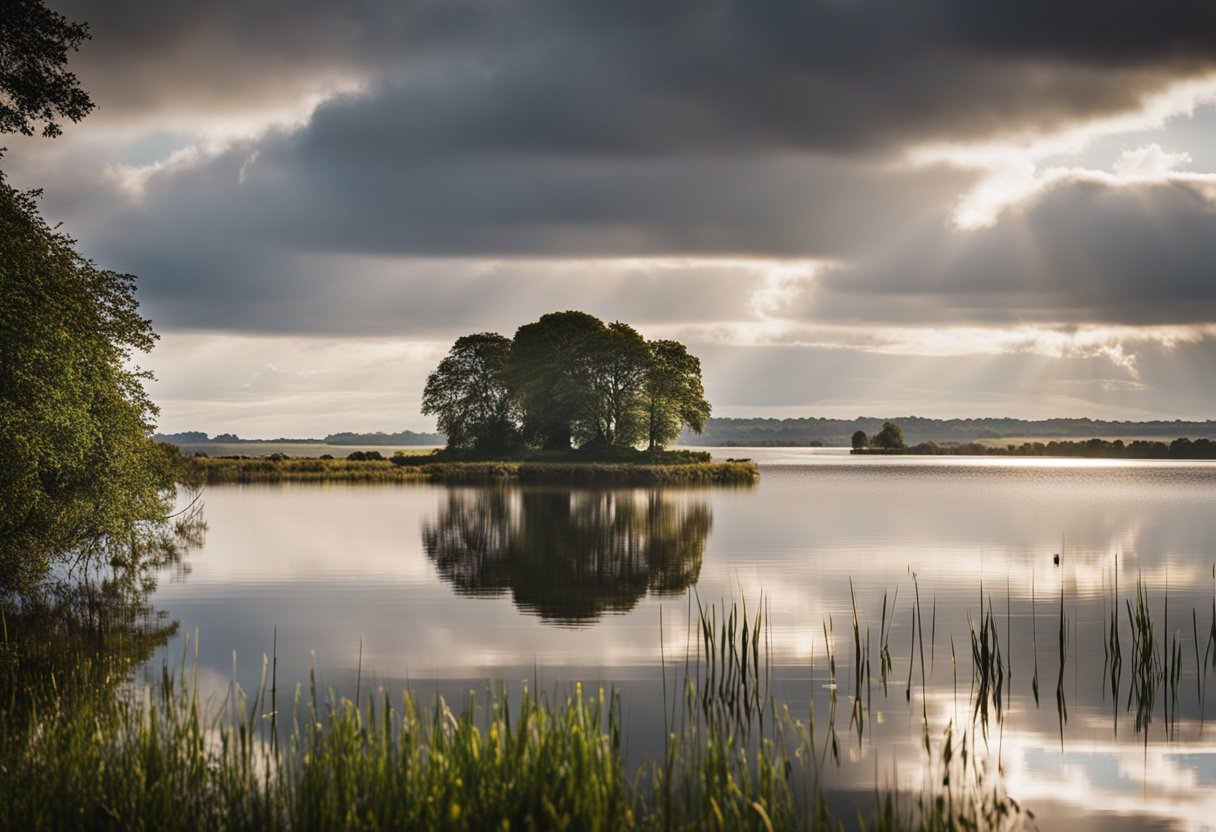
In safeguarding Lough Neagh’s natural beauty and rich biodiversity, our conservation efforts focus on reducing pollution and preserving vital habitats and species.
Pollution Control
To combat the pollution affecting Lough Neagh, we’ve implemented stringent measures to monitor and reduce contaminants. Initiatives, such as regular water quality assessments, play a crucial role in this process.
- Monitoring: Routine testing ensures compliance with environmental standards, helping to detect and address pollutants early.
- Community Action: Engaging local communities educates residents about the impacts of pollution and promotes environmentally friendly practices.
Species and Habitat Protection
Lough Neagh is a haven for wildlife, making the protection of species and their habitats a top priority. Our efforts are multifaceted:
- Habitat Conservation: We maintain the lake’s ecosystems through projects that restore and protect shorelines and water quality.
- Wildlife Safeguards: Specialist teams work to conserve native species, like the dollaghan trout, through breeding programs and habitat management.
Protective regulations ensure that development around the lake does not disrupt these vulnerable species or their environments. Each step we take is a stride towards preserving Lough Neagh for the wildlife that resides here and for the future generations that will marvel at its wonders as we do.
Influence on Nearby Communities

Lough Neagh, the largest freshwater lake in the UK, is a focal point for both the natural environment and the surrounding communities. It generously provides resources, sustains livelihoods, and cherishes its cultural heartbeat.
Local Towns and Settlements
Nested around Lough Neagh are towns rich in history, such as Antrim, which is close to the northeast shores and boasts a grand castle and lush gardens. To the west lies Maghera, a picturesque town reflecting a quieter way of life. Across the waters to the southeast, one may find Down, offering lush sceneries and a glimpse into the region’s historic soul.
Meanwhile, the village of Toomebridge sits snug on the northwest edge of the lough, acting as a gateway between Counties Antrim and Londonderry. Dungannon, found to the southwest, merges the rural charm with its generous green expanses. Belfast, although not on the lakefront, retains strong economic and cultural ties with Lough Neagh, and Tyrone envelops the lake to the west, bestrewed with vibrant communities that contribute significantly to the lake’s welfare and identity.
- Antrim: Antrim Castle and Gardens, market town vitality
- Maghera: Quaint atmosphere, community-led initiatives
- Down: Panoramic views, historical depth
- Dungannon: Expansive parks, fusion of past and present
- Toomebridge: Cross-community links, a hub of biodiversity
- Belfast and Tyrone: Economic bonds, cultural vibrancy
Cultural Legacy
The myths surrounding Lough Neagh, like the legend of Finn McCool, have woven themselves into the fabric of the area’s culture. These stories infuse a unique character into the towns dotting its shores and are revered across Belfast, Antrim, Down, and Tyrone. Dramas relayed from generation to generation fortify the cultural identity, and festivities sprout from these tales, grounding the youth in their heritage. The lough’s influence flows into the arts as well, inspiring literature, music, and dance intrinsic to the local traditions. Historical villages such as the nearby Castle Village are brimming with tales that animate the community spirit.
- Legends: Enriching the folklore, uniting the communities
- Artistic inspiration: Literature, music, dance perpetuated by the lake’s presence
- Festivities: Celebrations stemming from age-old myths
- Heritage: Castle Village, historical identity preservation
Through these interactions with nature and myth, the people living in proximity to Lough Neagh have developed a deep-rooted connection with the lake that benefits their economy, lifestyle, and cultural practices.
Hydrology and Water Management
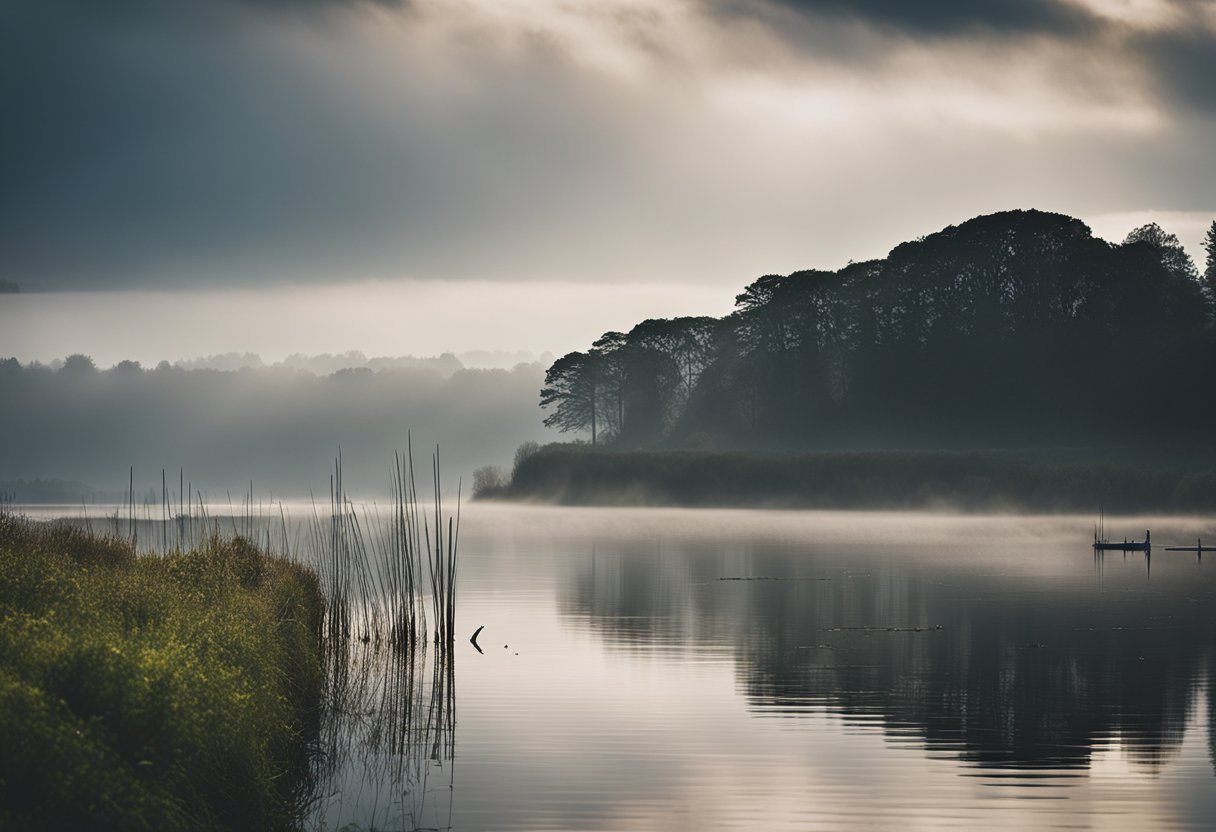
In managing Lough Neagh’s waters, we focus on sustainability, meeting the demands of both the environment and the population. The lake is not only a natural wonder but also a crucial resource for water supply and river management.
Water Supply Systems
Lough Neagh serves as a pivotal water supply, sustaining over 40% of Northern Ireland’s population. It’s crucial to note that Drinking Water sourced from the lake undergoes rigorous purification processes before reaching our taps. Various stations around the lake are dedicated to this purpose, ensuring that water quality meets the highest standards.
Key Entities:
- Water Supply: Lough Neagh is at the heart of Northern Ireland’s water supply network.
- Drinking Water: State-of-the-art facilities maintain potable water quality for public consumption.
River Systems and the Lower Bann
The river system stemming from Lough Neagh, particularly the River Bann—known as the Lower Bann past the lough—plays an integral role in draining the lake and supporting biodiversity in its floodplain. Rivers such as the Blackwater interconnect within the lough’s vast catchment area, creating a complex hydrological web that demands careful management to balance ecological health with human needs.
Key Entities:
- River Bann: This major river drains Lough Neagh and is essential in controlling water levels and local ecology.
- Blackwater: As a significant tributary, it contributes to the overall water management of the Lough Neagh system.
By understanding the interplay between these water bodies, we can better protect and make use of this precious resource. It’s our duty to ensure the longevity and health of Lough Neagh’s water systems for generations to come.
Climate and Meteorological Aspects
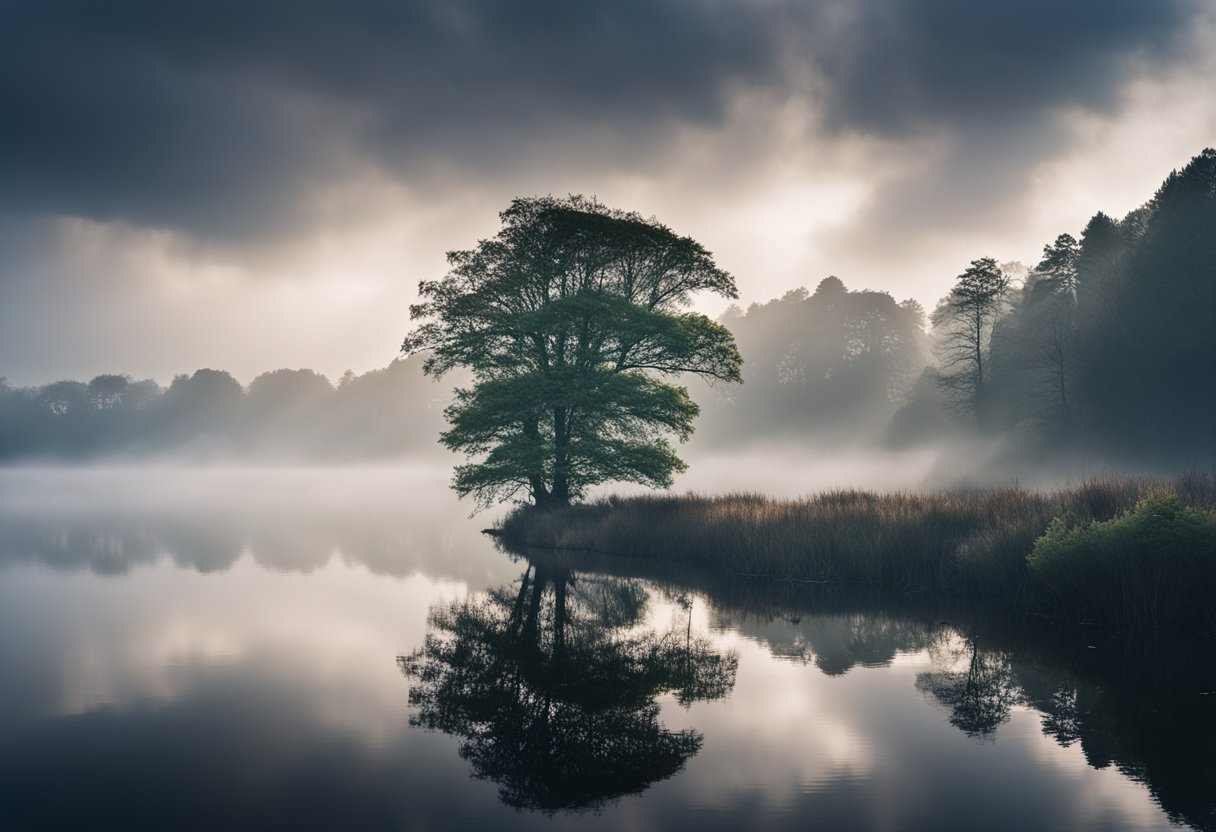
In our exploration of Lough Neagh, we focus on the climatic nuances and environmental shifts that influence this emblem of natural heritage.
Climatic Patterns
Lough Neagh’s climate is characterised by its mildness, with an absence of extremes in temperature that owes much to the regulating influence of the Atlantic Ocean. The region experiences a maritime climate, resulting in relatively cool summers and mild winters. Precipitation is a frequent element, with rainfall evenly distributed throughout the year.
Average Temperatures:
- Summer: 14-18°C
- Winter: 4-6°C
Rainfall Patterns:
- Average Annual Rainfall: 800-1000mm
- Wettest Months: October to January
Climate Change Impact
The impacts of climate change on Lough Neagh, including nearby Portmore Lough, manifest in the form of altered weather patterns, increased rainfall, and temperature fluctuations. These changes threaten the delicate ecological balance of the lake and its surroundings. In recent years, toxic algae blooms have intensified, which negatively affect both the water quality and the lake’s biodiversity. Incidents such as these point towards the larger environmental concerns that climate change brings forth.
- Increased Rainfall: Leading to higher water levels and potential flooding.
- Temperature Variations: Affecting the native species and their habitats within the lake ecosystem.
Our understanding of Lough Neagh’s climate and meteorological characteristics empowers us to better appreciate and protect this natural wonder, recognising the challenges brought forth by a changing climate.
Frequently Asked Questions
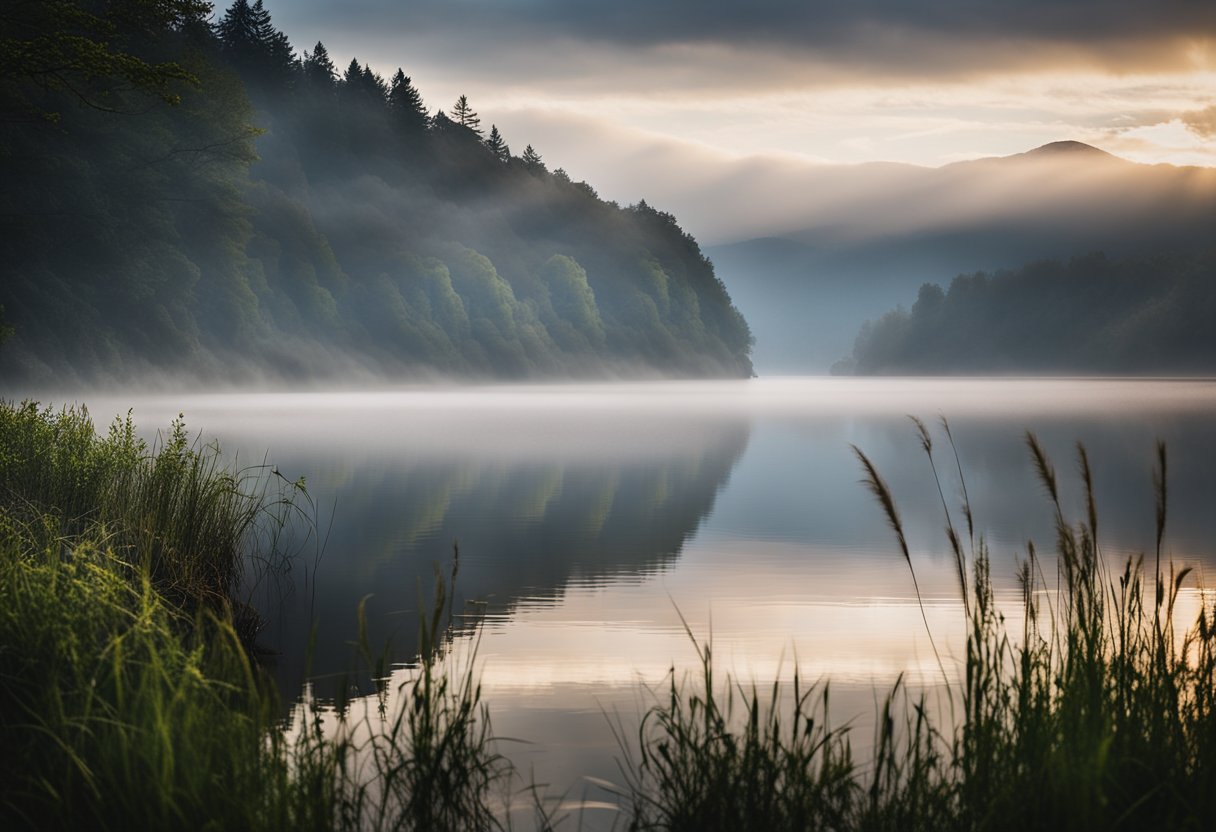
In this section, we tackle some of the most common inquiries about the mystical origins and intriguing aspects of Lough Neagh. Let’s uncover the realities behind the myths and legends.
What are the depths and dimensions of Lough Neagh?
Lough Neagh is the largest freshwater lake in the British Isles, stretching approximately 30 kilometres across and 15 kilometres wide. In terms of depth, it has an average depth of 9 metres and reaches a maximum of 25 metres.
Can Lough Neagh’s formation be attributed to man-made structures or natural processes?
The formation of Lough Neagh is primarily attributed to natural geological processes, including the impact of glacial activity and the accumulation of water in a depression over millennia.
What are some key facts about Lough Neagh, including its geographical significance?
Lough Neagh holds a central position in Northern Ireland and contributes to the region’s rich biodiversity. It is an important water source and a habitat for wildlife, making it a site with significant ecological value.
Is Lough Neagh recognised as the largest lake within the British Isles?
Yes, Lough Neagh is recognised as the largest lake within the British Isles, both by surface area and volume, a noteworthy geographical hallmark.
What historical ownerships has Lough Neagh gone through over the years?
Lough Neagh has witnessed various phases of ownership, having been an asset contested by Irish clans and, subsequently, subject to British Crown ownership. Its control has oscillated throughout history.
Are there any safety considerations concerning swimming in Lough Neagh?
Regarding safety, it is important for swimmers to be aware of the potential hazards such as unpredictable weather conditions and varying depths, which necessitate caution and respect for local guidelines when swimming in Lough Neagh.


